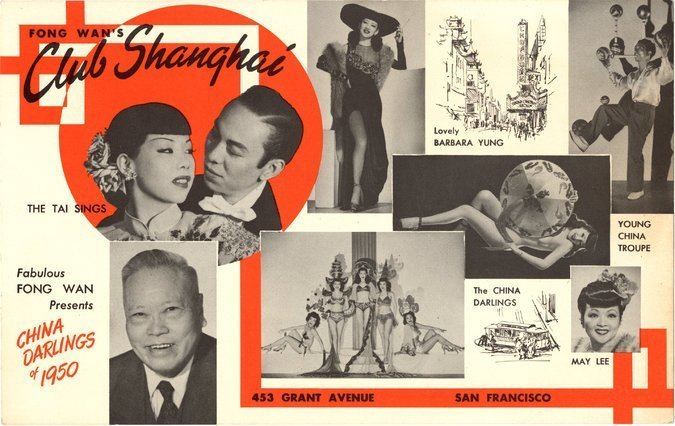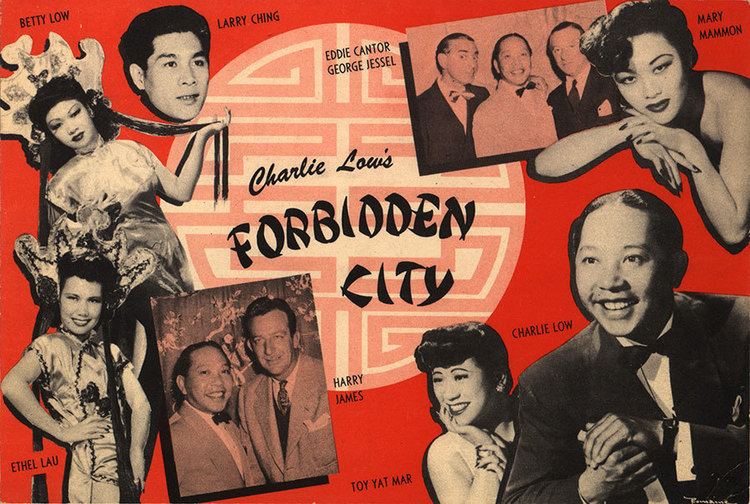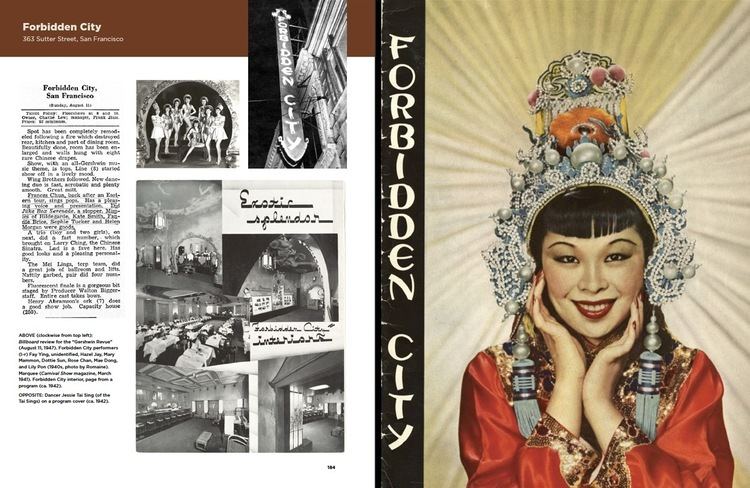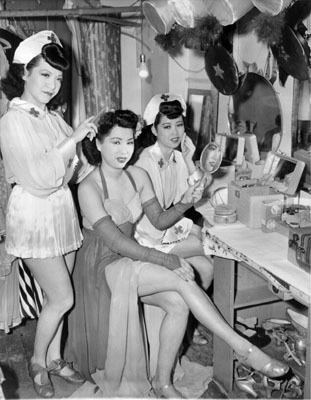 | ||
The Forbidden City was a Chinese nightclub and cabaret in business from the late 1930s to the late 1950s, on the second floor of 363 Sutter Street (the former space is now renumbered 369 Sutter Street and is now a franchise of Barbizon Modeling and Acting) in San Francisco between Chinatown and Union Square. The Forbidden City featured Asian American singers, dancers, chorus lines, magicians, strippers, and musicians. It was popular with military personnel who were transiting through San Francisco during World War II. The novel, and in turn the musical and film Flower Drum Song were inspired by the Forbidden City, as was the 1989 documentary, Forbidden City U.S.A.
Contents

History

Charlie Low, the son of small store owners from Nevada, opened the Forbidden City in 1938, after the success of Chinese Village, which he opened two years earlier. Named after the Forbidden City in Beijing, the new club became the most famous among approximately 12 Chinese-themed cabaret clubs in Chinatown. It was located on the outskirts of San Francisco's Chinatown, and intended to cater to the curiosity of a largely white audience. Initially, Low found it difficult to recruit performers from the local Chinese community, which looked down on entertainers, particularly women in sexually provocative performances. Business was slow until Low hired Noel Toy, a nude model who had been performing at the Golden Gate International Exposition. Life Magazine published a 3-page profile of the club, praising the dancing abilities of Chinese women as a "fragile charm distinctive to their race".

The club thrived during World War II, and throughout the 1940s and 1950s. In 1957 author C. Y. Yee wrote a best-selling novel, Flower Drum Song, set at the Forbidden City. Rodgers and Hammerstein created a popular musical from the book in 1958, which has had several revivals, the most recent by David Henry Hwang in 2001-2002. In 1961 a Hollywood film was made from the musical. These portrayals did little to help the club, however. By the late 1950s it was facing increasing competition from more explicit shows, such as the Condor Club in North Beach. The club converted briefly to a strip club before closing in 1962. The space was destroyed by a fire in the 1980s, but the building survived and was used as a computer instruction center as of 2000.

An hour-long documentary, Forbidden City, U.S.A, was filmed in the mid-1980s and released in 1989, featuring most of the original cast. The documentary led indirectly to a second singing career for Larry Ching, the club's "Chinese Frank Sinatra."
Description

The Forbidden City has been compared to an Asian-American version of the Cotton Club, in that it featured an all-ethnic cast of performers for a mostly white audience, performing to the popular tastes of the time rather than in stereotyped or authentic ethnic roles. However, some acts played up the supposed exoticism of ethnic Chinese, as well as sensuality of Chinese women. The owner, Charlie Low, generated publicity by nicknaming the performers after famous mainstream celebrities (the "Chinese Frank Sinatra", the "Chinese Fred Astaire", and so on). Part of the club's appeal to both audiences and performers was the "racial cross-dressing" of placing Asian Americans into traditionally white entertainer roles, and the racial dialog that came out of the varying level of success of the various performers had in fitting into these roles.

For many visitors from middle-America, Forbidden City was their first encounter with people of Asian ethnicity. San Francisco's Asian population was approximately 4.2% of the population in 1940, versus 0.2% for all of the United States. Although the cast included Filipino Americans, Japanese Americans (except during World War II, when the club's Japanese American performers were removed as part of the Japanese American internment), Korean Americans and other Asian Americans, they were presented to audiences as Chinese.
The club itself seated 300, and also contained elaborate stage area and dressing rooms (accessed through the kitchen!). Typical of the clubs of the time, in front, it displayed pictures of famous guests (greeted by Low).
An evening's entertainment at Forbidden City included a full Chinese or American dinner followed by dancing, then a floor show. Acts were a combination of vaudeville and burlesque-style performances, including singing, tap dancing, ballroom dancing, skits, slapstick, tumbling, and parodies of American cowboy scenes.
The club also formed a touring company that played across the United States and Canada, as well as USO shows worldwide.
Notable performers
A number of Asian American musicians, actors, and other celebrities either started their professions at the Forbidden City, or are famous for performing there. During the early years of the club the performers' salaries, modest as they were, provided rare employment opportunities for Asian-Americans suffering under the discriminatory laws of the time.
